CPS Unit Number 094-01
Camp: 94
Unit ID: 1
Operating agency: AFSC
Opened: 4 1943
Closed: 3 1946
Workers
Total number of workers who worked in this camp: 333
-
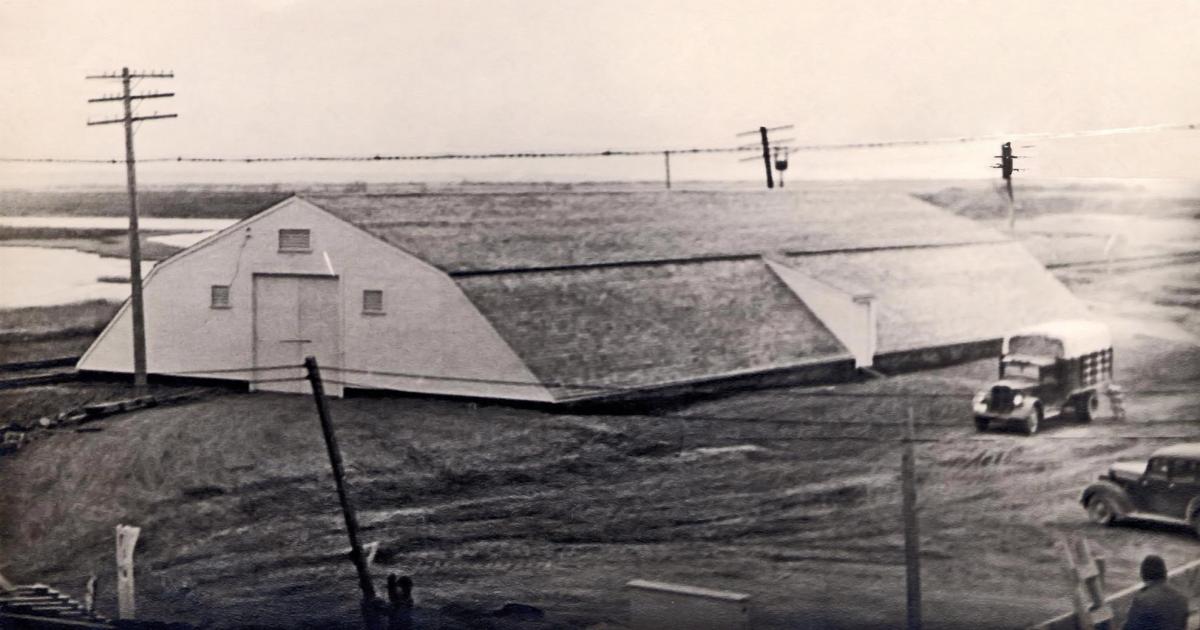 CPS Camp No. 94Trenton. the finished potato warehouse. The main part--the 15 foot basement-- is out of site (sight), of course. It is now packed to the rafters with 70,000 to 80,000 bushels of spuds. The capacity of the basement is 60,000 to 70,000 bushels, but the floor is also piled high at present, with sacks waiting to be shipped away.Digital Image from American Friends Service Committee: Civilian Public Service Records (DG002), Swarthmore College Peace Collection, Swarthmore, Pennsylvania
CPS Camp No. 94Trenton. the finished potato warehouse. The main part--the 15 foot basement-- is out of site (sight), of course. It is now packed to the rafters with 70,000 to 80,000 bushels of spuds. The capacity of the basement is 60,000 to 70,000 bushels, but the floor is also piled high at present, with sacks waiting to be shipped away.Digital Image from American Friends Service Committee: Civilian Public Service Records (DG002), Swarthmore College Peace Collection, Swarthmore, Pennsylvania -
 CPS Camp No. 94Trenton. T. Potts and John C. Mardis, the camp supt., a swell guy, and as camp supts. Gos, a very understanding and sympathetic boss.Digital Image from American Friends Service Committee: Civilian Public Service Records (DG002), Swarthmore College Peace Collection, Swarthmore, Pennsylvania
CPS Camp No. 94Trenton. T. Potts and John C. Mardis, the camp supt., a swell guy, and as camp supts. Gos, a very understanding and sympathetic boss.Digital Image from American Friends Service Committee: Civilian Public Service Records (DG002), Swarthmore College Peace Collection, Swarthmore, Pennsylvania -
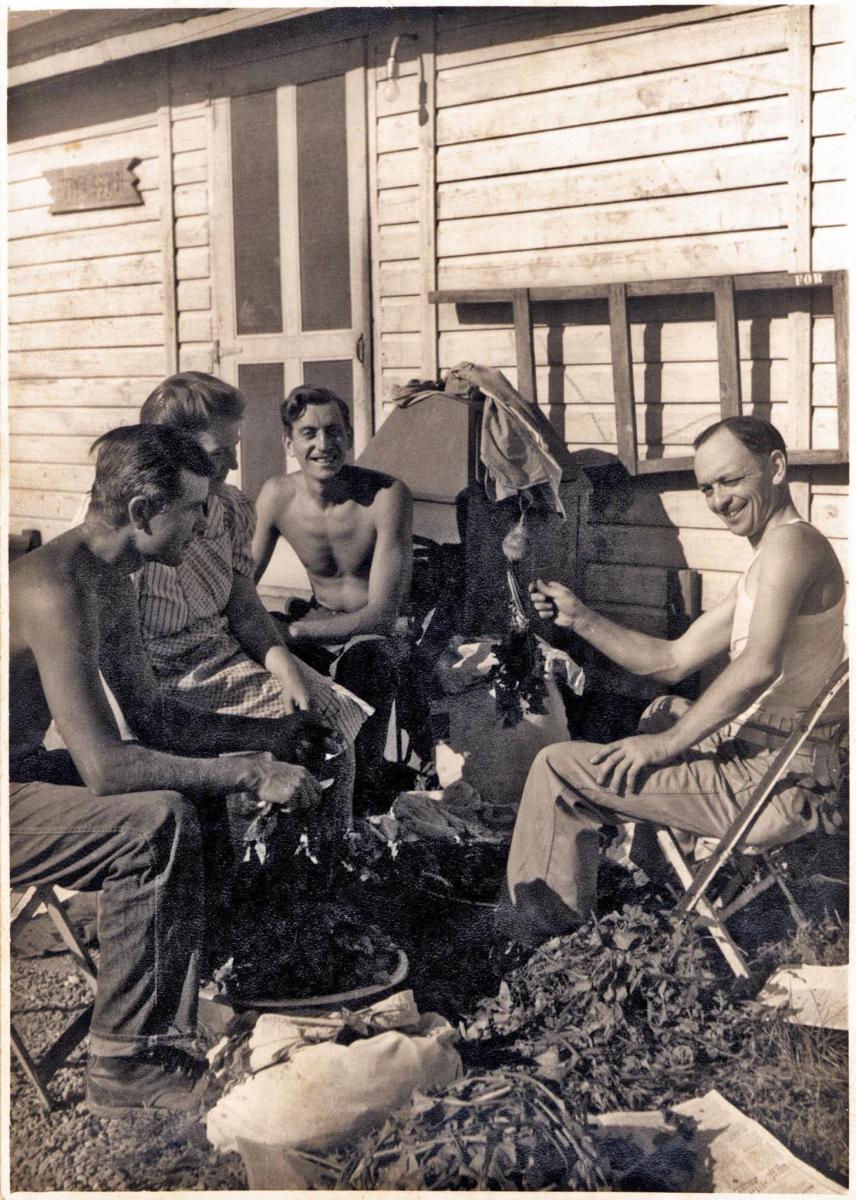 CPS Camp No. 94Trenton. Some more canning. From left to right, Alex Hetko, now at Mt. Weather, Nancy Foster, former dietitian [sic], Roy Simon, now at Phila. State, and Vic Guthrie, personnel sec'y at Powellsville and now laboratory assistant at Columbia University.Digital Image from American Friends Service Committee: Civilian Public Service Records (DG002), Swarthmore College Peace Collection, Swarthmore, Pennsylvania
CPS Camp No. 94Trenton. Some more canning. From left to right, Alex Hetko, now at Mt. Weather, Nancy Foster, former dietitian [sic], Roy Simon, now at Phila. State, and Vic Guthrie, personnel sec'y at Powellsville and now laboratory assistant at Columbia University.Digital Image from American Friends Service Committee: Civilian Public Service Records (DG002), Swarthmore College Peace Collection, Swarthmore, Pennsylvania -
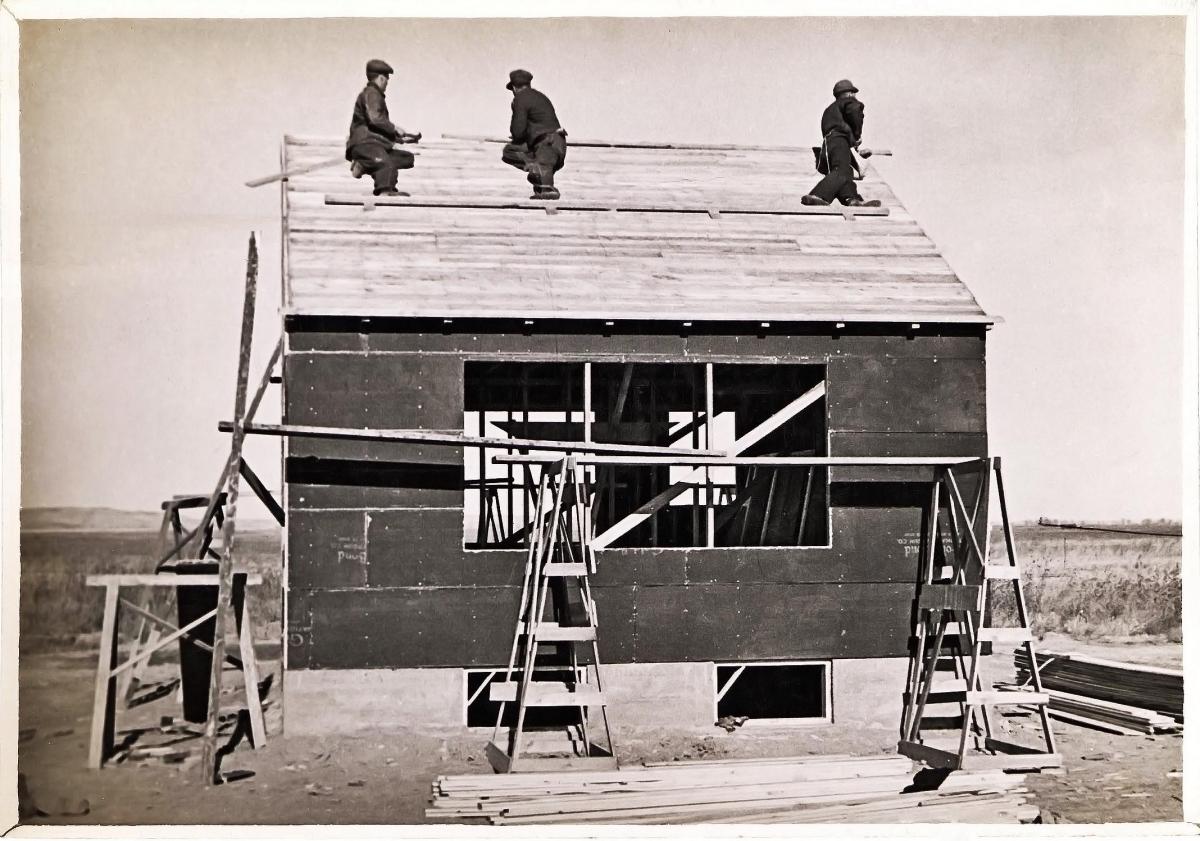 CPS Camp No. 94Part of the C.P.S. carpenter crew working on top of a farmhouse. Photo by Paul Reinert.Digital Image from American Friends Service Committee: Civilian Public Service Records (DG002), Swarthmore College Peace Collection, Swarthmore, Pennsylvania
CPS Camp No. 94Part of the C.P.S. carpenter crew working on top of a farmhouse. Photo by Paul Reinert.Digital Image from American Friends Service Committee: Civilian Public Service Records (DG002), Swarthmore College Peace Collection, Swarthmore, Pennsylvania -
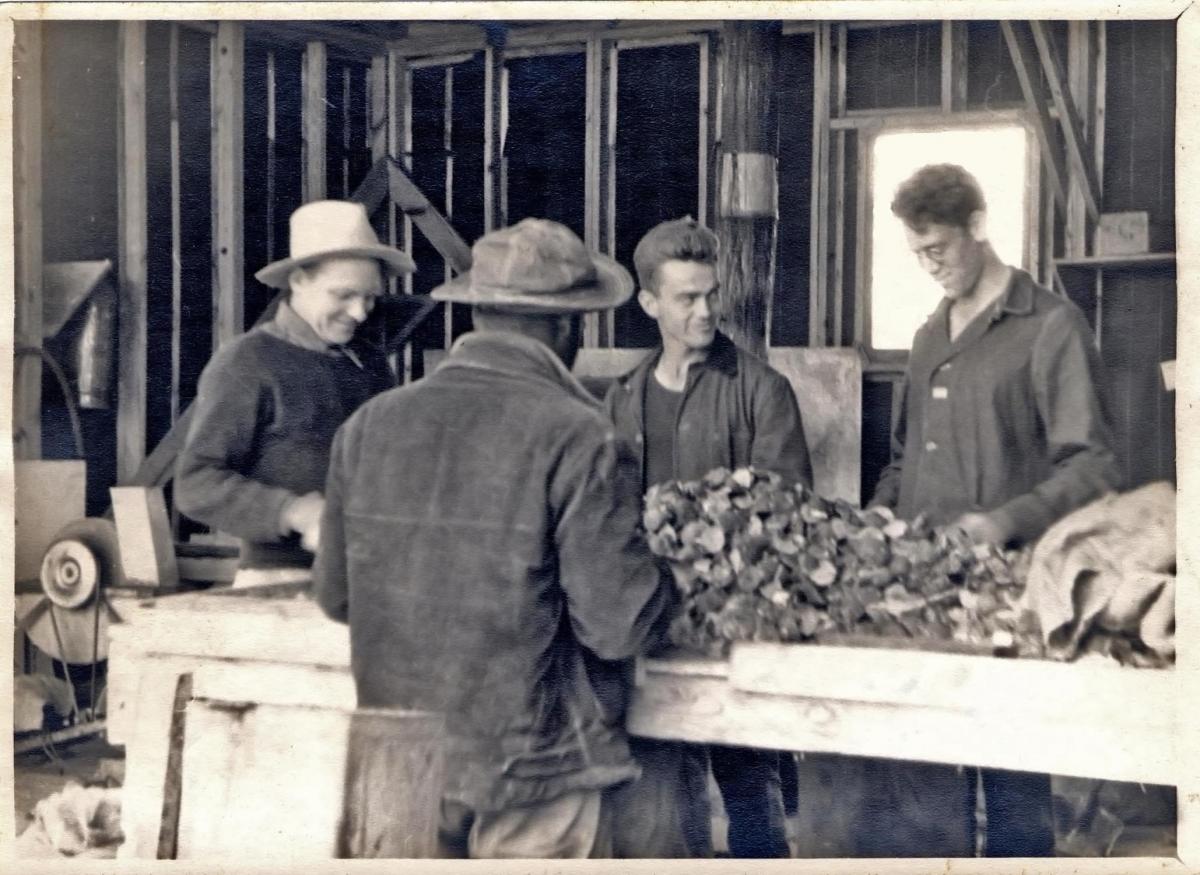 CPS Camp No. 94CPS men cutting potatoes for planting.Digital Image from American Friends Service Committee: Civilian Public Service Records (DG002), Swarthmore College Peace Collection, Swarthmore, Pennsylvania1943
CPS Camp No. 94CPS men cutting potatoes for planting.Digital Image from American Friends Service Committee: Civilian Public Service Records (DG002), Swarthmore College Peace Collection, Swarthmore, Pennsylvania1943 -
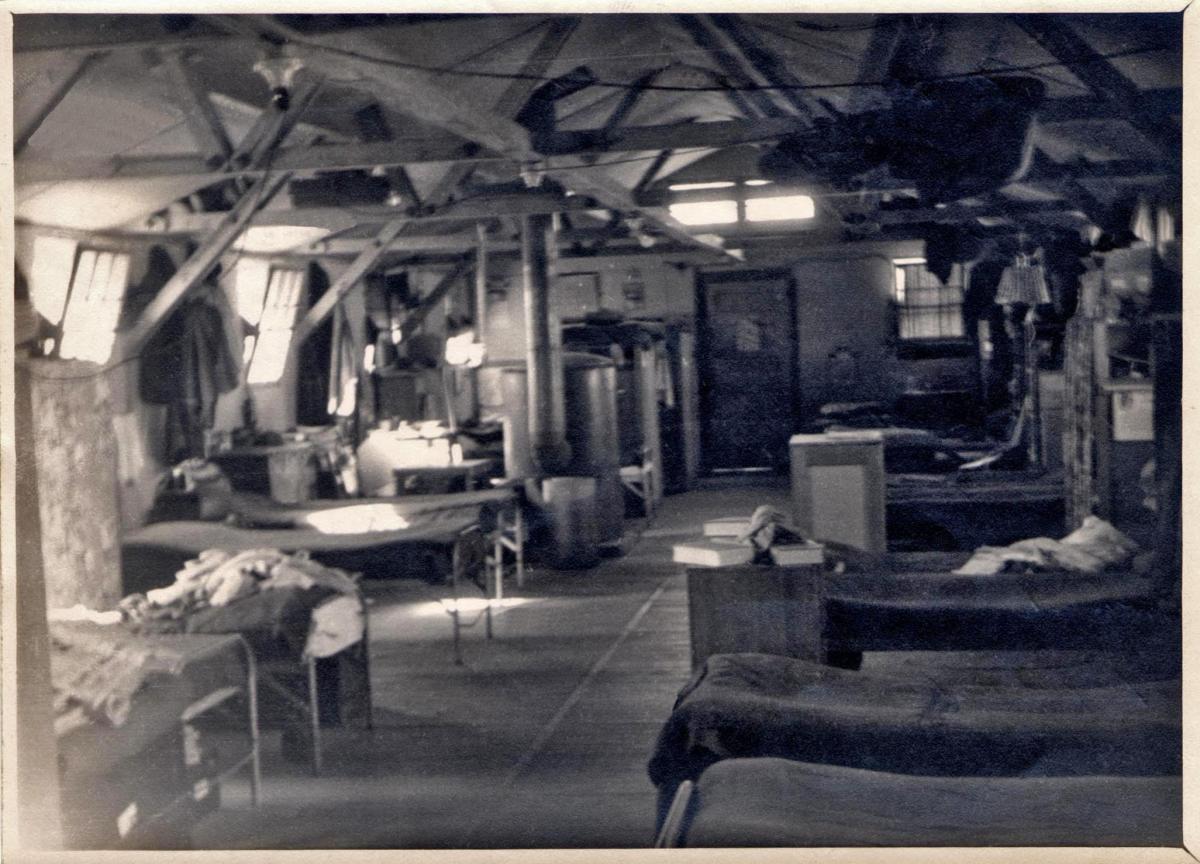 CPS Camp No. 94Camp Interiors, Farm Security Administration. Trenton, North Dakota.Digital Image from American Friends Service Committee: Civilian Public Service Records (DG002), Swarthmore College Peace Collection, Swarthmore, Pennsylvania
CPS Camp No. 94Camp Interiors, Farm Security Administration. Trenton, North Dakota.Digital Image from American Friends Service Committee: Civilian Public Service Records (DG002), Swarthmore College Peace Collection, Swarthmore, Pennsylvania -
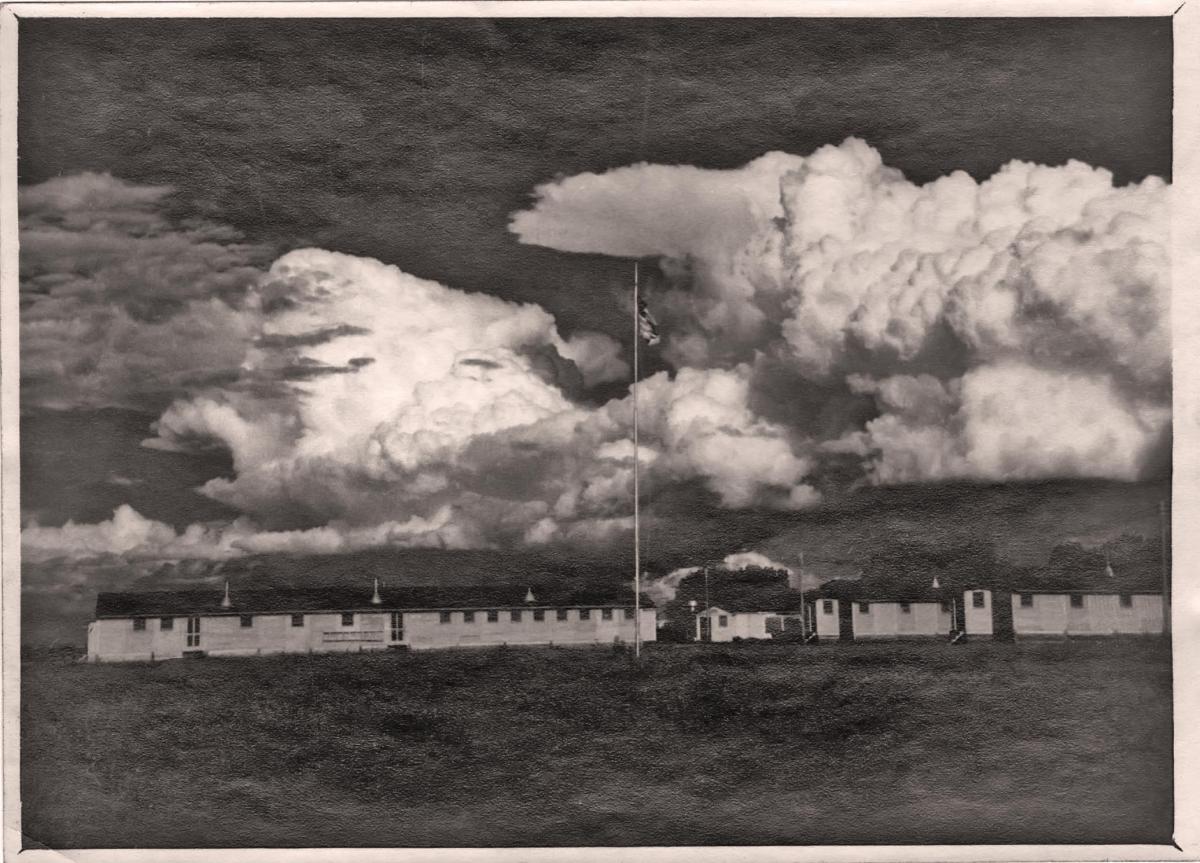 CPS Camp No. 94Quadrangle scene, taken from CPS office steps. Long building on left is the Recreation Building. Others are two dorms and the wood-working shop.Digital Image from American Friends Service Committee: Civilian Public Service Records (DG002), Swarthmore College Peace Collection, Swarthmore, Pennsylvania
CPS Camp No. 94Quadrangle scene, taken from CPS office steps. Long building on left is the Recreation Building. Others are two dorms and the wood-working shop.Digital Image from American Friends Service Committee: Civilian Public Service Records (DG002), Swarthmore College Peace Collection, Swarthmore, Pennsylvania
-
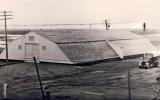
-
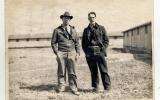
-

-
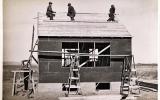
-
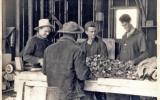 1943
1943 -
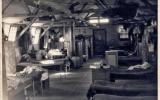
-
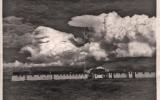
CPS Camp No. 94, a Farm Security camp located in Trenton, North Dakota operated by the American Friends Service Committee (AFSC) opened in April 1943. The camp closed in March 1946, about the time that AFSC withdrew from CPS. The men surveyed land, cleaned ditches and gullies, and used heavy machinery to level land.
The camp located in Trenton, North Dakota was one of two CPS camps working with the Farm Security Administration within the Department of Agriculture. The other was CPS Camp No. 64 in Terry, Montana.
Directors: Ed Peacock, Tom Potts, Claude Shotts
When Camp Simon, CPS Camp No. 54 operated by the Association of Catholic Conscientious Objectors in Warner, New Hampshire closed in February 1943, twenty-five Warner men arrived at Trenton. The Warner men, who had first transferred into CPS Camp No. 84 at Oakland, Maryland, also an AFSC camp but open for only one month, had hoped that all Warner assignees could have relocated together. A significant number of men did remain together in Trenton.
Men in Friends units tended to represent the greatest diversity with respect to religious identification. Few men in AFSC camps and units reported Friends denominational affiliation and it was not uncommon for the group to include men from a variety of religious groups in addition to COs reporting no religious affiliation.
In Friends projects, men on average entered CPS with 14.27 years of educational experience, with forty percent of that number having completed both college and post graduate education. With respect to prior occupation, forty-three percent of men in Friends camps and units entered with technical and professional work experience, as opposed to eighteen percent among men at Brethren and twelve percent in Mennonite projects. Men in the Friends projects tended to report entering CPS from urban rather than rural communities. (Sibley and Jacob pp. 171-172)
J. Benjamin Stalvey, one of the assignees, had been drafted from his teaching assistantship at the University of Illinois. He served at both Big Flats and Trenton. After discharge, he accepted an appointment as an instructor in the political science department at Duke University, fully accepted and admired by the department chair for “his strong convictions”. Later reappointed to his teaching assistantship at the University of Illinois, he completed his Ph.D. degree. (Sibley and Jacob p. 446)
John H. Michener, a Friend who entered CPS in his freshman year at the University of Kansas, reported on his time in CPS.
I was assigned to Trenson, North Dakota, and worked some on the land reclamation project there, but I was primarily in the kitchen. When they closed Trenton I went to the Gatlinburg camp in the Smoky Mountains National Park. I started off on the trail crew maintaining park trails, but then they stuck me in the kitchen again. I had 28 months in CPS.
Men performed duties associated with land development of irrigation projects, sometimes to assist in agricultural production and other times to supply municipal or industrial water or energy.
The men surveyed land, cleaned ditches and gullies, and operated heavy machinery in these projects.
In the two Farm Security projects, CPS men gave 122,000 person days of work. (Camp Operations Division, Selective Service report in Sibley and Jacob pp. 126-127)
According to Zahn, shortly after the Warner men arrived, they “commandeered a special bunkhouse for themselves, named it ‘The Casbah’, and declared it off limits to all ‘200-percenters’”. They maintained a pattern of resistance to CPS throughout their stay at Trenton. They reportedly continued their pattern of binge drinking and other rebellious activities. (Zahn pp. 212-214)
Men at Trenton had the opportunity to enroll in courses offered as a part of a School for Cooperative Living, similar to the program offered at CPS Camp No. 42 at Wellston, Michigan. (Robinson p. 167)
Henry Dyer walked out of the camp in protest of the nature of the work as well as the requirement to work without pay. He later gathered 1,706 signatures on a petition requesting “a civilian board to place each man in suitable and useful work in the public welfare at regular wages”. (in Robinson p. 193)
The men published The Irrigator from April/May 1943 through September/October 1943. The Irrigator began as Plowshare at CPS Camp No. 14 at Merom, Indiana before moving to Trenton.
The men also published two other camp papers. The Last Ditch appeared from November 1944 through March 1945. New Party News came out June 1945 through January 1946
For stories from men who, as COs, walked to a different drummer during World War II, see Mary R. Hopkins, Editor, Men of Peace: World War II Conscientious Objectors. Caye Caulker, Belize: Producciones de le Hamaca, 2010, John H. Michener pp. 272-291.
See also Mitchell Lee Robinson, “Civilian Public Service During World War II: The Dilemmas of Conscience and Conscription in a Free Society.” Ph.D. dissertation, Cornell University, 1990.
See Mulford Q. Sibley and Philip E. Jacob, Conscription of Conscience: The American State and the Conscientious Objector, 1940-47. Ithaca, NY: Cornell University Press, 1952, Chapter VII The Service Record of the Conscientious Objector pp. 124-151.
Swarthmore College Peace Collection, Camp periodicals database.
Gordon C. Zahn, Another Part of the War: The Camp Simon Story. Amherst, MA: The University of Massachusetts Press, 1979.